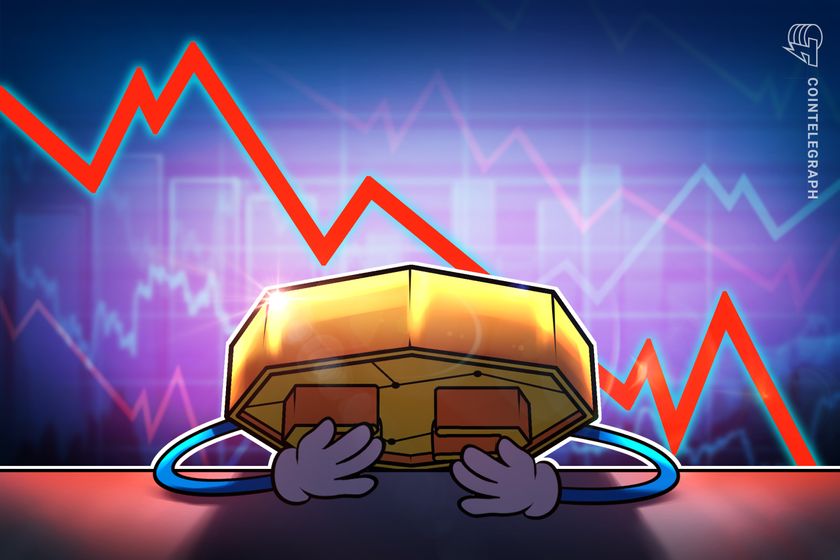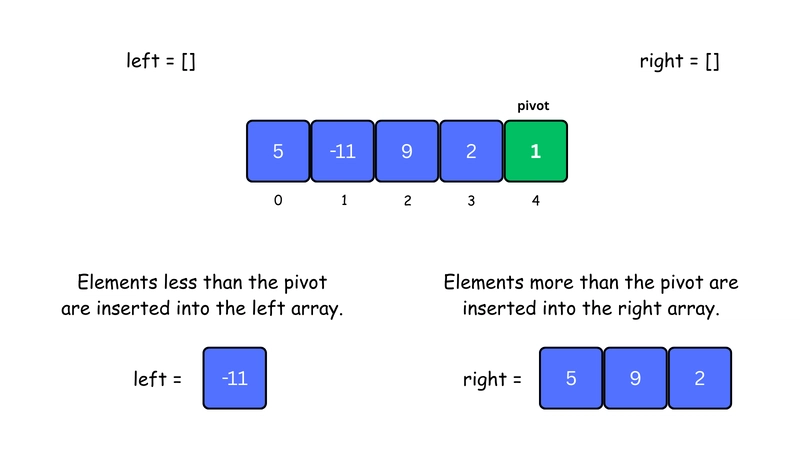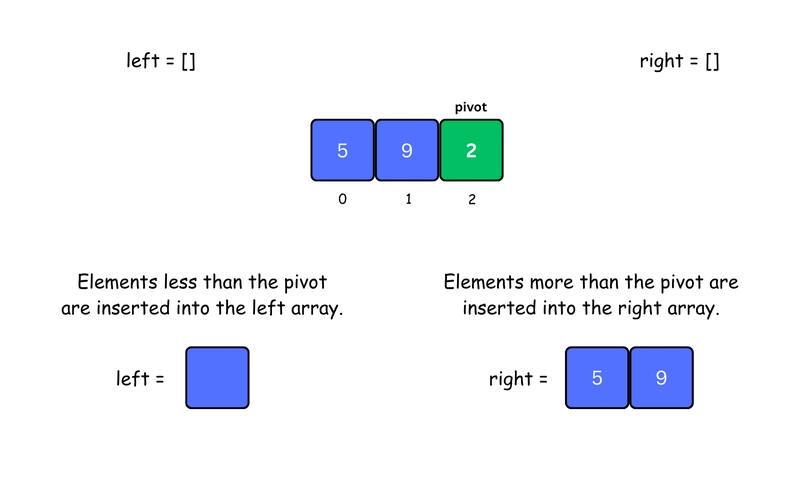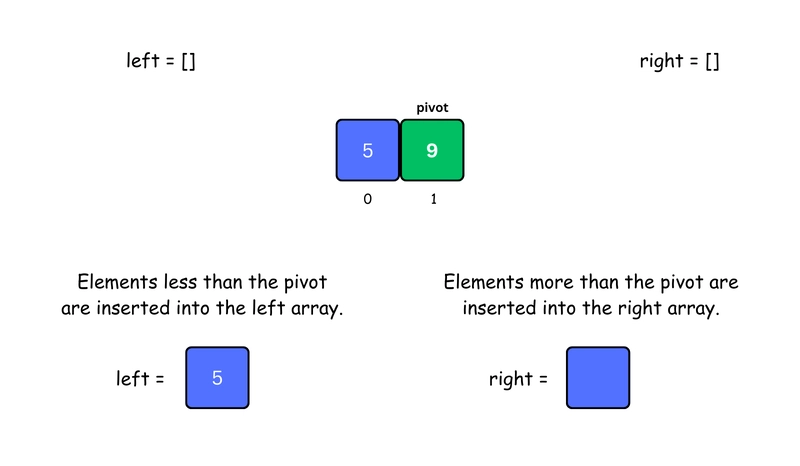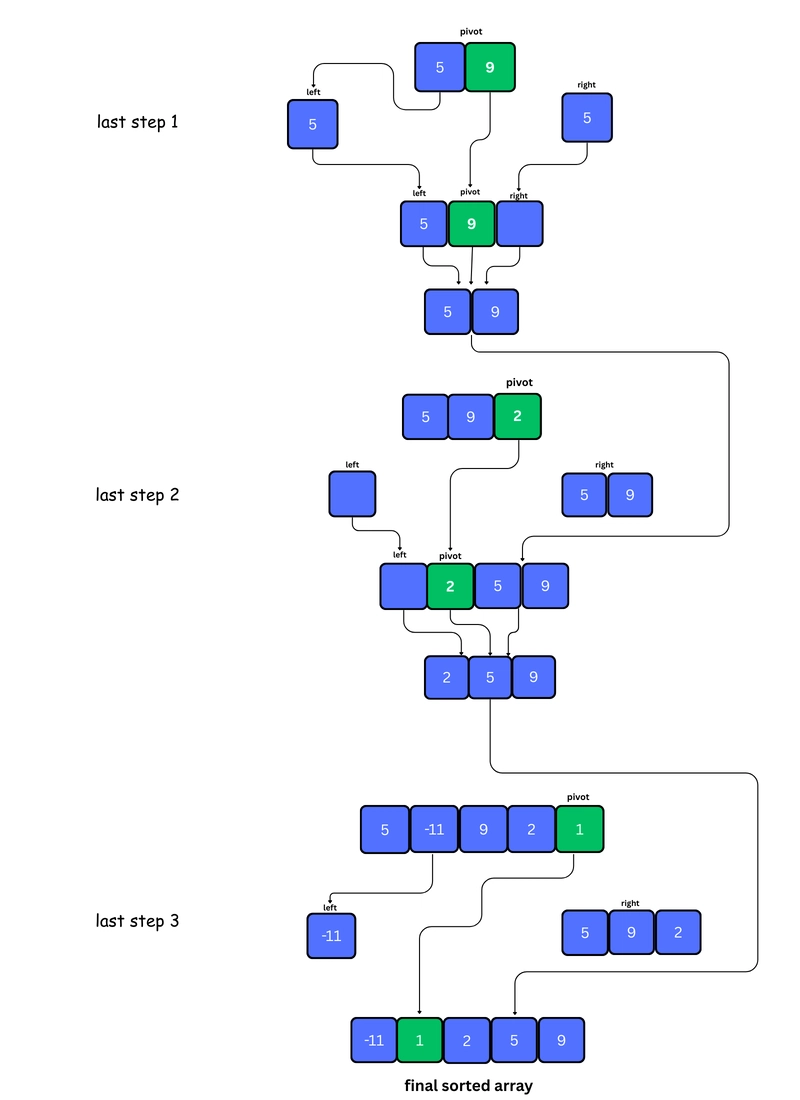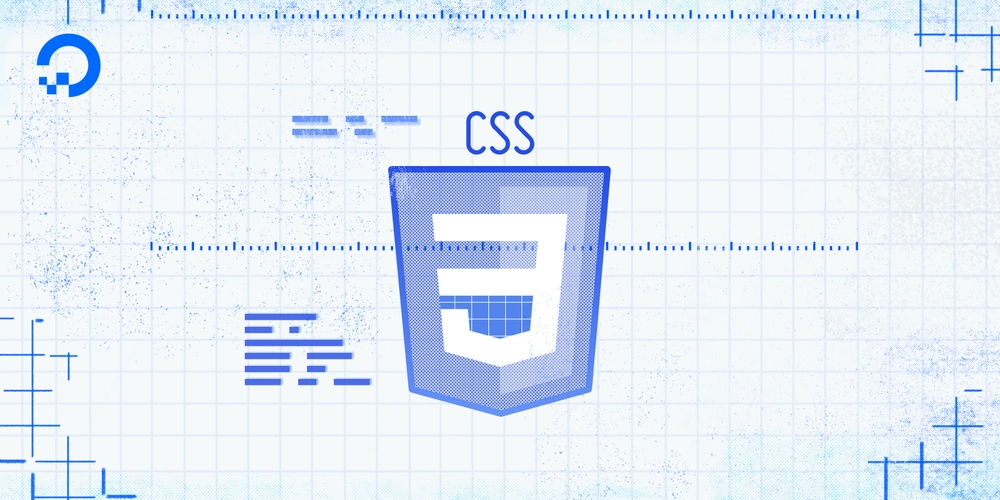Quick Sort
Quicksort is a sorting algorithm that uses the divide and conquer method. 1. First, a pivot element is chosen from the array. 2. The array is then divided into two parts: Elements less than the pivot go to the left. Elements greater than the pivot go to the right. 3. This process is repeated for the left and right parts until each subarray has only one element. 4. At that point, the elements are already sorted, and the final sorted array is formed by combining all the parts. Working of Quicksort Algorithm 1. Choose the Pivot Element In Quicksort, the pivot can be chosen in different ways. In our case, we will always pick the last element of the array as the pivot. 2. Split into Left and Right Arrays Create a left array with elements less than pivot. Create a right array with elements more than pivot. 3. Recursive Calls on Subarrays As we know, JavaScript is synchronous. So, we first call quickSort() recursively on the left array. But as you can see above, the left array has only one element, so it returns immediately. Next, we call quickSort() on the right array and step 1 and 2 will repeat during this process. 4. Again, we recursively call on right array 5. Finally, we combine the returned value. You can understand how the returned values are combined with the help of the visual image below. Quick Sort Algorithm FUNCTION quickSort(arr): IF length of arr

Quicksort is a sorting algorithm that uses the divide and conquer method.
1. First, a pivot element is chosen from the array.
2. The array is then divided into two parts:
- Elements less than the pivot go to the left.
- Elements greater than the pivot go to the right.
3. This process is repeated for the left and right parts until each
subarray has only one element.
4. At that point, the elements are already sorted, and the final sorted array is formed by combining all the parts.
Working of Quicksort Algorithm
1. Choose the Pivot Element
In Quicksort, the pivot can be chosen in different ways. In our case, we will always pick the last element of the array as the pivot.
2. Split into Left and Right Arrays
- Create a
leftarray with elements less thanpivot. - Create a
rightarray with elements more thanpivot.
3. Recursive Calls on Subarrays
As we know, JavaScript is synchronous. So, we first call quickSort() recursively on the left array. But as you can see above, the left array has only one element, so it returns immediately.
Next, we call quickSort() on the right array and step 1 and 2 will repeat during this process.
4. Again, we recursively call on right array
5. Finally, we combine the returned value.
You can understand how the returned values are combined with the help of the visual image below.
Quick Sort Algorithm
FUNCTION quickSort(arr):
IF length of arr <= 1:
RETURN arr
SET pivot TO last element of arr
INITIALIZE left as empty list
INITIALIZE right as empty list
FOR each element in arr EXCEPT the last one:
IF element < pivot:
ADD element to left
ELSE:
ADD element to right
RETURN quickSort(left) + [pivot] + quickSort(right)
Quick Sort Code
function quickSort(arr) {
if (arr.length <= 1) return arr;
let pivot = arr[arr.length - 1];
let left = [];
let right = [];
for (let i = 0; i < arr.length - 1; i++) {
if (arr[i] < pivot) left[left.length] = arr[i];
else right[right.length] = arr[i];
}
return [...quickSort(left), pivot, ...quickSort(right)];
}
console.log(quickSort([5, -11, 9, 2, 1]));
Quick Sort Complexity
| Time Complexity | |
|---|---|
| Best | O(n*log n) |
| Worst | O(n²) |
| Average | O(n*log n) |
| Space Complexity | O(log n) |
| Stability | No |
1. Time Complexities
- Worst Case Complexity: O(n²) If the pivot is the smallest or largest number, it goes to the end of the sorted array.
One side becomes empty, and the other side has almost all the elements. So, Quicksort keeps working on the bigger side again and again.
It works much better when the pivot is somewhere in the middle, not at the ends.
Best Case Complexity: O(n log n)
It occurs when the pivot element is always the middle element or near to the middle element.Average Case Complexity: O(n log n)
It occurs when the above conditions do not occur.
2. Space Complexity
- Space Complexity: O(n) The space complexity for quicksort is O(log n).
Applications of Quicksort
1. General Purpose Sorting
Used in libraries and frameworks for sorting numbers, strings, and other data types.
Example: JavaScript's Array.sort() uses a variation of Quicksort under the hood in some engines.
2. Large Datasets
Performs well for large datasets that fit in memory.
Searching Algorithms
Prepares data for binary search by sorting the array first.
3. Data Processing
- Useful in data analysis pipelines to sort values quickly.
4. Distributed Systems
- Used in parallel versions like parallel quicksort for dividing and sorting data across nodes.
5. Embedded Systems
- Efficient for systems with limited memory due to its in-place sorting.
6. Databases
- Helps optimize query performance by sorting records for indexing and searching.












































































































































































![[The AI Show Episode 143]: ChatGPT Revenue Surge, New AGI Timelines, Amazon’s AI Agent, Claude for Education, Model Context Protocol & LLMs Pass the Turing Test](https://www.marketingaiinstitute.com/hubfs/ep%20143%20cover.png)

























































































































![[DEALS] Microsoft Visual Studio Professional 2022 + The Premium Learn to Code Certification Bundle (97% off) & Other Deals Up To 98% Off](https://www.javacodegeeks.com/wp-content/uploads/2012/12/jcg-logo.jpg)



![From Accountant to Data Engineer with Alyson La [Podcast #168]](https://cdn.hashnode.com/res/hashnode/image/upload/v1744420903260/fae4b593-d653-41eb-b70b-031591aa2f35.png?#)








































































































.png?#)



































































































































![What Google Messages features are rolling out [April 2025]](https://i0.wp.com/9to5google.com/wp-content/uploads/sites/4/2023/12/google-messages-name-cover.png?resize=1200%2C628&quality=82&strip=all&ssl=1)











![iPadOS 19 Will Be More Like macOS [Gurman]](https://www.iclarified.com/images/news/97001/97001/97001-640.jpg)
![Apple TV+ Summer Preview 2025 [Video]](https://www.iclarified.com/images/news/96999/96999/96999-640.jpg)
![Apple Watch SE 2 On Sale for Just $169.97 [Deal]](https://www.iclarified.com/images/news/96996/96996/96996-640.jpg)

























































































































